Exploring Peru's Archaeological Wonders and Insights


Intro
Peru's archaeological sites stand as a testament to the ingenuity and complexity of ancient civilizations. This South American gem isn't just famous for its breathtaking landscapes, but also for the remnants of the Inca Empire and other lesser-known cultures that have left their marks across the land. As we embark on this exploration, we unearth not just artifacts but the narratives woven into the very fabric of Peru’s history.
Life in Peru millennia ago was marked by innovation, trade, and cultural exchanges that shaped communities. From the famous Machu Picchu to the enigmatic Nazca Lines, each site tells a story about the people who once thrived in these regions. Let's take a closer look at these spectacular locations and the richer histories they represent.
Research Overview
Summary of Key Findings
Peru's archaeological research highlights several key points:
- Diverse Civilizations: The country was home to numerous pre-Columbian civilizations, each contributing to the societal mosaic.
- Technological Advancements: New excavation technologies have revolutionized our understanding of ancient urban planning.
- Conservation Challenges: Efforts to preserve these historical sites often clash with modern economic developments and tourism.
Importance of the Research
Understanding these archaeological sites is crucial for several reasons:
- Cultural Heritage: These sites help in preserving and promoting Peru’s rich cultural identity which can inspire a sense of national pride.
- Education and Awareness: They serve as a tangible link to our past, offering insight into ancient technological, social, and political structures.
- Global Significance: As more discoveries are made, the importance of these sites transcends borders, contributing to a global understanding of human development.
Methodology
Study Design
This analysis adopts a multidisciplinary approach, combining historical research, archaeological methods, and technology assessments. Field studies and online databases are integrated to gather a layered understanding of findings across various sites.
Data Collection Techniques
Key techniques include:
- Field Excavation: Systematic and careful digging at sites like Chan Chan and Sipán allows archaeologists to collect artifacts.
- Remote Sensing: Use of aerial imagery helps in mapping large sites, revealing structures otherwise hidden beneath vegetation.
- Material Analysis: Scientific equipment enables the examination of pottery, textiles, and organic remains to determine usage and trade patterns.
Through this comprehensive investigation, we not only celebrate Peru’s archaeological marvels but also confront the ongoing challenges to safeguarding these treasured historical narratives.
"Preserving history isn't merely about maintaining physical structures; it’s about safeguarding the stories, wisdom, and cultures they represent."
As we continue to explore these astonishing sites, we dive deeper into what they reveal about the human experience and our shared heritage.
Foreword to Peru's Archaeological Legacy
Peru's geographical diversity, ranging from the Andes mountains to the Amazon rainforest, creates a unique backdrop for its archaeological narrative. This article aims to uncover how the nation’s rich historical tapestry has contributed to our understanding of ancient societies. By examining these sites, we gain insight into the social structures, cultural practices, and technological advancements of different civilizations that flourished here. Each archaeological discovery serves as a thread in the broader fabric of human history, connecting the past with present and future generations.
The Historical Context
The easy-to-miss nature of ancient histories often leaves a vacuum where understanding should thrive. Peru is home to numerous old civilizations, each with their own unique contributions to society. Cultures such as the Nazca, Moche, and Inca left behind monuments and artifacts that reflect their beliefs, challenges, and lifestyle.
Machu Picchu, for instance, highlights the architectural innovations of the Inca. But it's not just the structures; it's crucial to consider the environment that shaped them. The triumphs and tribulations of these civilizations, from wars to natural disasters, have left an indelible mark on the lands they inhabited.
“Understanding the historical context isn’t merely academic; it allows us to appreciate the ingenuity and resilience of those who came before us.”
David, a seasoned archaeologist, once said in an informal chat, the full depth of human manifestations cannot simply be encapsulated in dates and timelines. Instead, it encompasses their everyday interactions and struggles against nature as well. This historical perspective emphasizes that the values and difficulties of past peoples inform contemporary discussions about identity and cultural heritage.
Importance in Archaeological Studies
Digging into archaeology isn’t merely about uncovering artifacts; it's about telling the stories of human beings. The archaeological sites of Peru serve as natural laboratories for understanding the evolution of civilizations. In a world that constantly seeks to balance modernity with tradition, these sites offer valuable lessons on sustainable practices and community reliance.
Archaeology in Peru extends beyond the academic realm. It acts as a vital resource for education, tourism, and cultural preservation. Here are a few key points to consider:
- Cultural Heritage: Preserving these sites means safeguarding a way of life that can inspire future generations.
- Research Opportunities: Archival research and hands-on excavations attract scholars from varied disciplines, creating a melting pot of ideas and collaboration.
- Tourism and Economics: Sites like Chan Chan and Sacsayhuamán draw millions, fostering local economies while promoting awareness of historical contexts.
- Environmental Lessons: These archaeological endeavors often underscore the adaptability of ancient peoples to their landscapes, offering clues on sustainable living.
In summation, the importance of Peru’s archaeological sites extends well beyond mere artifacts. They highlight the interconnectedness of history, culture, and the environment, proving that the past can inform our future.
Major Archaeological Sites
When we talk about the rich historical and cultural tapestry of Peru, the archaeological sites serve as the cornerstone of this narrative. They reveal not just the past of ancient civilizations but also their intricate societal structures, spiritual beliefs, and technological advancements. Each site holds a piece of the puzzle, helping us construct a more comprehensive understanding of human history and the evolution of societies over time.
Exploring these major sites can give us insights into how the ancient inhabitants adapted to their environment and organized their communities. The numerous monuments dotting the Andean landscape are like pages in a captivating book, each one telling a story of triumph, challenge, and creativity. Unpacking these sites allows researchers, students, and enthusiasts alike to grasp the weight of Peru's archaeological significance and its ongoing impact on modern society.
Machu Picchu: An Incan Icon
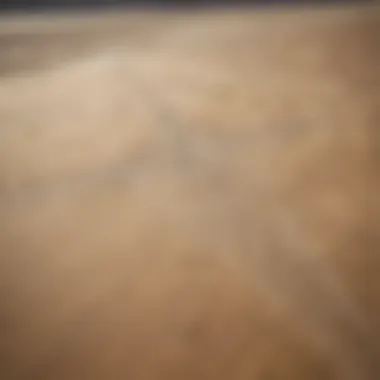
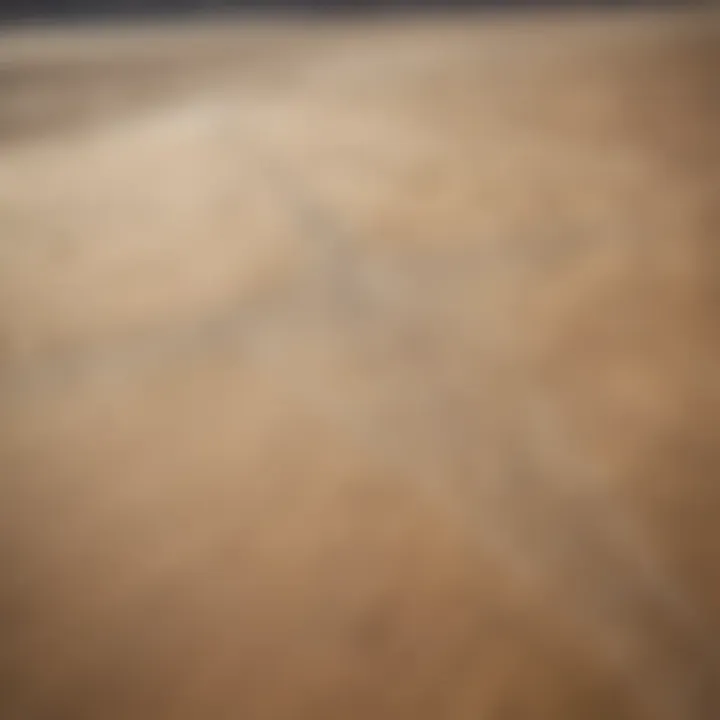
Historical Significance
Machu Picchu stands as a symbol of the Incan Empire's strength and ingenuity. Discovered in 1911 by Hiram Bingham, this lost city perched high in the Andes Mountains represents not just an architectural feat; it encapsulates a whole era of history that is crucial for understanding Incan civilization. The site's strategic location offers an insight into their military prowess and their sophisticated understanding of agriculture and astronomy.
The uniqueness of Machu Picchu lies in its dual purpose—it served both as a royal estate and as a religious site. This dual function makes it a popular choice for scholars and tourists alike, as it encapsulates the spiritual and temporal power that the Incas wielded.
Architectural Innovations
The architectural innovations present at Machu Picchu are nothing short of breathtaking. The use of fine craftsmanship in stone masonry particularly stands out. The way stones are fitted together without any mortar speaks volumes about the engineering techniques of the Incas. This not only provided stability to the structures but also showcased their understanding of the environment.
One notable feature is the terracing system that surrounds the site— it enabled agriculture on steep slopes, demonstrating clever adaptation to local topography. These innovations have made Machu Picchu an essential case study for architects and engineers looking at sustainable construction.
Nazca Lines: Art on an Epic Scale
Theories Behind Their Creation
The Nazca Lines represent one of the most perplexing archaeological phenomena. These enormous geoglyphs etched into the arid land of southern Peru are thought to serve multiple purposes—from astronomical markers to ritualistic pathways. Most intriguingly, the scale and precision of the lines raise questions regarding the techniques used by the Nazca people.
One theory suggests the lines were created to be viewed from the air, possibly to attract attention from the gods. This idea positions the Nazca Lines as a striking intersection of art, spirituality, and science, making it an invaluable focal point in discussions about ancient communication and belief systems.
Impacts of Weather and Time
The Nazca Lines are not just subject to human curiosity but are also vulnerable to natural elements. Over the years, erosion, wind, and changing climate patterns have adversely affected their visibility and interpretation. This leads to important considerations about conservation and how to manage legacy sites.
The challenge of preserving these lines enhances discussions about our responsibility to protect such historical treasures— a pressing issue in today's climate change debates. The enduring question remains: how do we balance preservation with the innate forces of nature?
Caral: The Oldest Urban Center
Societal Structure
Caral, often regarded as the oldest urban center in the Americas, offers a wealth of information about early societal structures. Dating back to around 3000 BC, the architecture of Caral consists of large ceremonial complexes, evidence of social stratification.
The presence of a central authority is suggested through the layout of the city and the remains of major public buildings. This provides insights into the governance and organizational strategies of early civilizations in Peru, showcasing their ability to create a complex society long before the rise of the Inca Empire.
Cultural Developments
Cultural developments in Caral feature innovative agricultural practices, advanced textile production, and social systems that allowed for the flourishing of urban life. The city shows how trade networks facilitated the transfer of goods and ideas, which were crucial for cultural interchange.
What makes Caral significant is its emphasis on peaceful interactions. This perspective challenges the long-standing view that early urban centers were always hubs of conflict and domination.
Sacsayhuamán: Architectural Marvel
Construction Techniques
Sacsayhuamán is another monumental site that highlights the Incas' architectural and engineering expertise. Located near Cusco, the complex features enormous stones fitted together with remarkable precision. The sheer weight and interlocking design of these stones reflect a highly advanced understanding of material properties and construction methods.
The unique building techniques employed here have sparked debates among scholars regarding the means of transportation and assembly. Not only does this add layers to our comprehension of technological innovation, but it also showcases the importance of labor organization in large-scale projects.
Cultural Relevance
From a cultural perspective, Sacsayhuamán embodies the Incan worldview, particularly the significance of spirituality expressed through architecture. The site served not only as a fort but also as a religious epicenter during significant festivals.
Its relevance today extends beyond archaeology; it remains a symbol of Andean identity and resistance against colonial narratives. This dual importance underscores how ancient sites can bridge past and present.
Chan Chan: The Largest Adobe City
Socioeconomic Factors
Chan Chan was an impressive adobe city and the administrative capital of the Chimu civilization. The design of the city illustrates the socioeconomic factors that contributed to its prominence as a trade center, connecting various coastal and highland regions of Peru.
The organization of Chan Chan reflects advanced urban planning, with distinct areas for residential, administrative, and industrial purposes. This not only showcases the ingenuity of pre-Incan societies but also emphasizes their capacity for urban development.
Preservation Challenges
The massive scale of Chan Chan presents significant preservation challenges, especially given the vulnerability of adobe construction to environmental factors like rainfall and flooding. Efforts to combat decay have become critical as the city faces increasing threats due to climate change and human impact.
Its preservation is not just about maintaining bricks and walls but about safeguarding a cultural legacy that speaks to humanity's ability to build and thrive. Continued dialogue surrounding these challenges is essential for ensuring future generations can appreciate the history embedded in Chan Chan.
Cultural Implications of Archaeological Discoveries
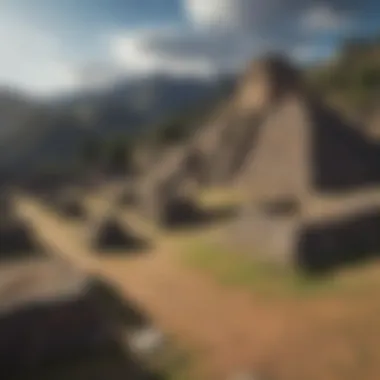
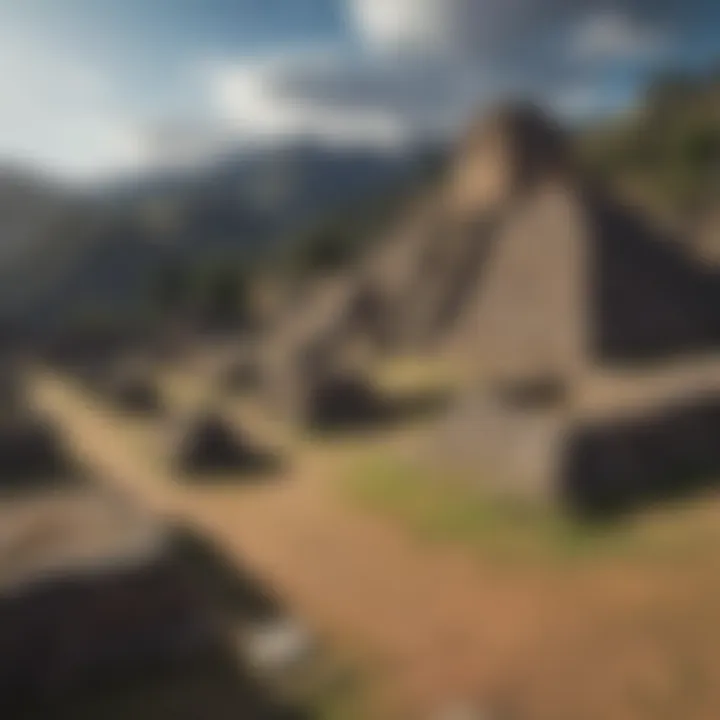
Understanding the cultural implications of archaeological discoveries in Peru is vital, as it shines a light on the diverse ways of life and belief systems of ancient civilizations. Each unearthed artifact or structure tells a story about the people who created it, allowing modern scholars and enthusiasts alike to connect with the past in meaningful ways. Furthermore, these discoveries hold significance not only for academic pursuits but also for preserving cultural identity and inspiring contemporary societies.
Religious Practices and Beliefs
Ancient Peruvians practiced a variety of religions, deeply entwined with their daily existence, which reflected their understanding of the cosmos and its natural processes. Shamanism, ancestor worship, and agricultural deities featured prominently in religious practices. Temples and ceremonial sites, such as those discovered at Machu Picchu, reveal how central religious observances were in the lives of these peoples. These sites often served as places of pilgrimage, where communities gathered to honor their deities, seek guidance, or offer sacrifices.
Significantly, the study of these beliefs helps modern researchers unravel the spiritual frameworks that sustained ancient Peruvian societies. Understanding these practices offers insights into how cultures evolve, adapt, and express their identities over generations.
Daily Life in Ancient Peru
Daily life in ancient Peru was shaped profoundly by the cultural and environmental contexts in which these civilizations existed. The social structures and economic activities within these societies were interdependent, each influencing the other in intricate ways.
Social Structures
Social structures in ancient Peru were often hierarchical, with distinctions made between ruling classes, artisans, laborers, and farmers. The elite class typically held political and religious power, shaping the decision-making processes of their communities. Such stratification was essential for managing resources and labor effectively, which contributed to the overall stability and growth of these societies.
One key characteristic of these social structures was the role of the ayllu, a collective group of families working together for mutual benefit. This system facilitated the distribution of resources and labor, ensuring that no one went hungry. The unique feature of this structure was its focus on community cooperation. While this system undoubtedly had advantages, like shared resources and security, it also led to certain disadvantages, such as unequal power dynamics that could arise within these groups.
Economic Activities
Economic activities in ancient Peru were as varied as the landscape itself—farming, fishing, trade, and craft production were all crucial for survival. The agricultural prowess of these communities, particularly in growing corn, potatoes, and quinoa, was impressive; they developed advanced terrace farming techniques suited to the rugged terrain of the Andes.
The key characteristic that stands out in these economic practices is the emphasis on sustainability. Ancient Peruvians understood the importance of working in harmony with their environment, which resulted in ways of life that were resilient to fluctuating conditions. Their economic activities incorporated the reciprocity principle, which meant ensuring that resources were shared among community members. This principle had advantages by fostering social bonds but could also lead to difficulties in times of scarcity, where competition for resources could strain relationships within the community.
"Ancient Peru's riches are not just in gold and silver but in the robust cultural heritage that shapes the very identity of its people."
By diving into the cultural implications of archaeological discoveries in Peru, one unearths the layers of human experience, bringing to light how these ancient communities lived, worshipped, and thrived. The exploration of these themes is crucial, as they resonate with ongoing discussions about identity, heritage, and the lessons modern societies can learn from history.
Methodologies in Archaeological Research
In the realm of archaeology, methodologies serve as the backbone of research efforts. When we explore significant sites in Peru, understanding how excavations are planned, executed, and analyzed is crucial. This section highlights how researchers utilize various techniques and tools in their quest to unveil the past. Not only do these methodologies facilitate the extraction of valuable data, but they also ensure the integrity of the sites, which is a matter of both academic integrity and cultural pride.
Excavation Techniques
The process of excavation is akin to peeling back layers of time, revealing the stories buried beneath the surface. The objective isn’t just to dig; it’s about digging smart. Traditional hand tools like trowels and brushes are oftentimes the bread and butter for archaeologists. However, modern practices have introduced a range of technological advancements.
For instance, stratigraphic excavation allows researchers to understand the chronological order of deposits. By carefully removing soil in layers, archaeologists can piece together timelines and discern the context of artifacts. This method is particularly beneficial in sites like Machu Picchu and Chan Chan, where multiple civilizations may have occupied the same space over centuries.
Excavation also requires a keen eye for detail. Recording what is found – mapping, photographing, and cataloging artifacts and features – is essential. Without a meticulous approach, the story of a site could be lost in a single careless act. This careful, methodical work forms the heart of archaeological research in Peru.
Technological Aids in Archaeology
Technological tools have become a game-changer in archaeology, enabling researchers to access data previously unreachable. They bridge gaps in knowledge and offer perspectives that ground traditional approaches. Two notable technological aids are remote sensing and 3D imaging.
Remote Sensing
Remote sensing is like having a bird's eye view of the archaeological landscape. By using satellite imagery or aerial photography, archaeologists can uncover features not visible from the ground. This technique has unique advantages, such as allowing for landscape analysis without excavation.
Key Characteristics of Remote Sensing
- Non-invasive: It helps preserve the integrity of sites while collecting valuable information.
- Widespread data collection: Large areas can be mapped quickly, providing insight into a site’s layout and surrounding environment.
However, it’s not without limitations. The accuracy can vary based on the resolution of the images and the proficiency of the interpretation. Despite these challenges, remote sensing remains a vital tool for initial site assessment and planning further excavations.
3D Imaging
Another revolutionary advancement is 3D imaging, which captures detailed spatial data of artifacts and sites. This technique allows for precise modeling, which has multiple uses, from virtual reconstructions of sites to detailed documentation of artifacts.
Key Characteristics of 3D Imaging
- Enhanced visualization: Researchers can interact with the data in a dynamic way, leading to deeper understanding.
- Preservation: Digital replicas can act as backups if original artifacts are lost or damaged.
One unique advantage of 3D imaging is its capacity to create simulations of historical contexts, giving viewers insight into how ancient cultures might have interacted with their environments. However, the reliance on technology does raise questions about accessibility. Not every fieldworker may have the requisite technical skills or resources, which can lead to disparities in research efficacy.
As archaeology continues to evolve in Peru, blending traditional methodologies with innovative technologies is proving to be a productive way forward. The challenge remains to ensure that these sophisticated techniques enhance understanding without overshadowing the human stories rooted in the soil.
Current Challenges in Preserving Archaeological Sites
Peru's archaeological treasures are not just relics of the past; they symbolize the intricate fabric of human history. However, the preservation of these sites faces numerous challenges. Understanding these issues is vital for acknowledging the value of such heritage and the necessity of protecting it for future generations.
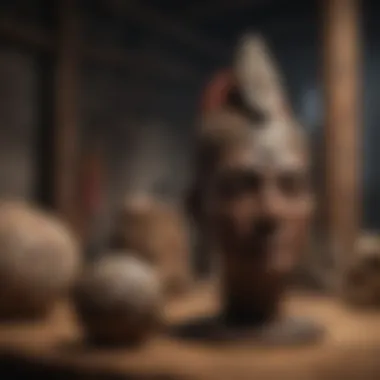
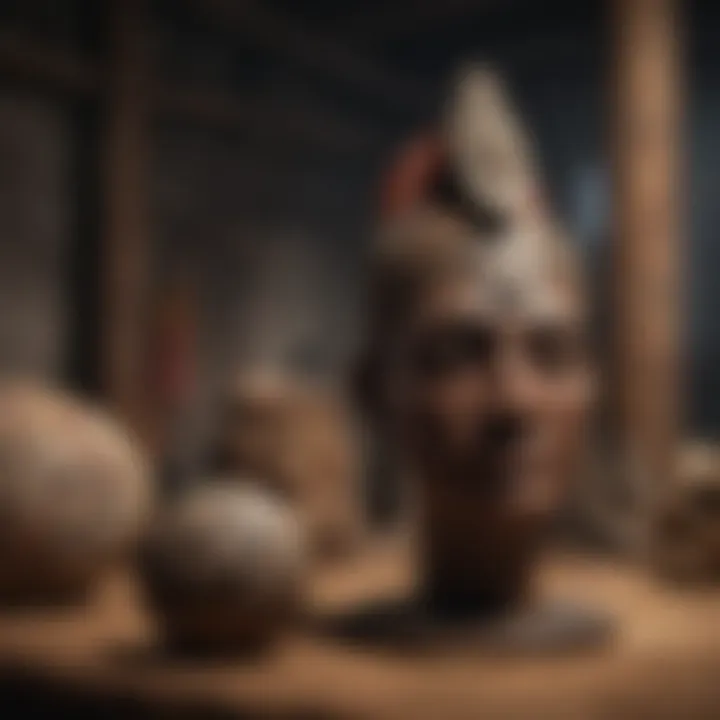
Environmental Threats
Climate Change Effects
The implications of climate change are increasingly becoming a matter of concern for Peru’s archaeological sites. Temperature fluctuations and erratic rainfall patterns can lead to severe erosion and structural degradation of ancient monuments. For instance, Machu Picchu, which sits at a precarious altitude, is particularly vulnerable to increased rainfall leading to landslides. This transformation of weather patterns is not just a fleeting phenomenon; it's a long-term crisis that can critically undermine archaeological integrity.
A distinguishing feature of the climate change effect is the accelerated deterioration it causes in previously stable environments. As temperatures rise, molds and fungi can infest stone structures, causing irreversible damage. The interaction between climate change and these ancient materials reveals a complex web of physical and chemical reactions. By focusing on how climate change impacts these sites, we highlight the urgency for adaptive strategies in preservation that balance historical respect with ecological awareness.
Pollution
Pollution presents another formidable obstacle to the preservation of archaeological sites in Peru. Airborne pollutants, primarily from urban areas, not only affect health but also corrode ancient monuments. One notable example is the sulfur emissions from nearby industrial zones, which can lead to acid rain, further harming the delicate carvings found on stones
The most troubling characteristic of pollution is its insidious nature; it often goes unnoticed until significant damage occurs. Therefore, it becomes a silent villain in the struggle for preservation. Moreover, pollution, particularly from tourism and urbanization, introduces foreign materials that can disrupt original structures. Thus, understanding pollution's impact is vital for effective conservation strategies aimed at safeguarding these invaluable sites.
Human Encroachment
Urban Development
Urban development represents one of the most pressing challenges in preserving archaeological sites in Peru. As cities expand, they often encroach upon sacred spaces, erasing layers of cultural history. This development, often justified by economic growth, can result in the destruction of sites that bear witness to ancient civilizations.
One critical aspect of urbanization is its tendency to prioritize short-term gains over long-term preservation. Roads and buildings built too close to archaeological sites can compromise their stability. Community engagement is crucial here, as awareness can lead to alternative solutions that honor both progress and preservation. The unique feature of urban development in this context is its ability to reshape landscapes and perspectives on heritage. A delicate balance must be struck between modern needs and the sanctity of historical contexts.
Tourism Impact
Peru is a mecca for tourists, drawing millions to explore its archaeological wonders. However, with increased foot traffic comes significant stress on these sites. Tourists, while benefitting local economies, often inadvertently contribute to the wear and tear of fragile structures. For instance, the densely packed pathways at archaeological sites can erode over time, altering the site's original condition.
The striking characteristic of tourism impact is the juxtaposition of cultural appreciation against ecological costs. It raises compelling questions: how do we maintain access to these sites while preserving their integrity? Moreover, the unique feature here lies in the potential positive influence of responsible tourism, which can be instrumental in raising funds for preservation efforts. Thus, there exists a dual pathway: one towards sustainable tourism that educates visitors about conservation, and another towards unchecked growth that risks losing these irreplaceable historical sites.
"The challenge of preserving Peru's archaeological heritage is as complex as the cultures that once flourished in its highlands."
The Future of Archaeological Research in Peru
As we look to the horizon of archaeological inquiry in Peru, it becomes clear that the interplay between ancient legacies and modern techniques will shape the forthcoming narratives of this rich cultural landscape. The evolution of research not only aims to deepen our understanding of Peru's storied past but also to ensure that these ancient sites are preserved for future generations. The future of archaeological research in Peru is intertwined with advances in technology, community involvement, and interdisciplinary approaches that encompass diverse fields of study.
Innovative Research Directions
Interdisciplinary Approaches
The practice of integrating various academic disciplines is gaining momentum in archaeological studies. This interdisciplinary lens offers fresh perspectives on ancient Peruvians. For instance, collaboration between archaeologists, historians, and environmental scientists can provide insights that a single field on its own might overlook. For example, understanding the relationships between climate patterns and human settlement in regions like the Andean mountains can help researchers unravel the complexity of societal collapse or resilience.
A key characteristic of interdisciplinary approaches is their flexibility. This method breaks down traditional barriers, allowing researchers to draw from anthropology, geology, and even digital humanities. Such flexibility not only broadens the scope of inquiry but also invites innovative solutions to perennial questions.
However, there are challenges too. Navigating the vocabulary and methodologies of different disciplines can sometimes lead to confusion. Despite this, the potential benefits of a shared knowledge base outweigh these drawbacks, pushing the boundaries of what can be known about Peru's past.
Community Involvement
Highlighting the role of local communities in archaeological research is crucial. Their stories, traditions, and even folklore can offer invaluable context that enriches academic comprehension. Engaging with indigenous knowledge holders allows archaeologists to bridge gaps between published records and living histories, enhancing credibility and depth of findings.
The significant characteristic of community involvement lies in its reciprocal nature. Not only do researchers benefit from the expertise of local populations, but communities also gain a sense of ownership over their heritage. For example, projects that involve locals in excavation work foster an appreciation for archaeological endeavors while providing skills and knowledge that can be transformative for those individuals.
Yet, the inclusion of community perspectives doesn't come without its hurdles. Tensions can arise when scholars impose methodologies that clash with local traditions or beliefs. Thus, a careful, respectful approach is essential to ensure that these collaborations yield fruitful and meaningful results.
Global Significance of Peruvian Archaeology
The significance of archaeological research in Peru extends far beyond its borders, influencing global narratives about human history and cultural development. These discoveries inform comparative analyses with other great civilizations around the world, enhancing our understanding of topics like urbanization, trade networks, and societal roles.
Ancient Peru's accomplishments in agriculture, architecture, and engineering offer lessons that resonate even today. The advanced agricultural practices of the Inca, as evidenced by terraces and irrigation systems, present sustainable solutions to contemporary food security challenges. Moreover, the engineering feats seen in sites such as Machu Picchu provide architectural blueprints that inspire modern builders and architects.
In summary, the future of archaeological research in Peru hinges on a blend of innovative methodologies, active community participation, and an appreciation of its global relevance. As scholars and local inhabitants traverse this path together, the riches of Peru's past will not only enlighten us about where we have come from but also guide us towards future discoveries.
Finale
As we reach the end of our exploration into Peru's archaeological treasures, it becomes clear that the significance of these sites extends far beyond their ancient stones and artifacts. They are windows into the past, revealing the intricate tapestry of human history, societal evolution, and cultural practices that have shaped the fabric of modern life.
Reflections on Peru's Archaeological Significance
Peru's archaeological sites serve not only as remnants of past civilizations but as crucial markers of identity and heritage for indigenous communities today. Each site tells a story that transcends time, providing insights into how our ancestors adapted to their environments, organized their societies, and interacted with each other. For instance, the strategic placement of cities like Machu Picchu, high in the Andes, reflects a profound understanding of geography and climate that resonates with contemporary challenges.
Moreover, the art and architecture found in these remnants are not merely relics; they are reflections of complex belief systems and social hierarchies. The Nazca Lines, etched into the desert, prompt discussions about ancient artistic expression and the connection between humanity and the cosmos, provoking thought on how art continues to influence modern culture. Such reflections enhance our appreciation for Peru's rich history, encouraging a sense of pride among current generations and fostering a desire for preservation.
Call to Action for Preservation
The ongoing threat to Peru's archaeological sites cannot be overstated. Urban development, tourism, and environmental damage are compromising the integrity of these invaluable cultural landmarks. With increasing awareness comes a responsibility to advocate for stronger preservation measures.
- Engagement: Individuals and communities must actively participate in local conservation efforts. Collaborating with archaeological organizations ensures that knowledge is shared and resources are utilized effectively.
- Education: Raising awareness about the fragility of these sites can cultivate a community of informed advocates. Educators and researchers play a crucial role in disseminating knowledge and igniting passion for preservation among younger generations.
- Support: Supporting policies that protect these sites is vital. Whether through lobbying for databases that track site conditions or advocating for sustainable tourism practices, every effort contributes to the long-term viability of Peru's archaeological heritage.
"Preserving these ancient treasures is not just about safeguarding the past; it's about securing a future where we can continually learn from these significant cultural legacies."



